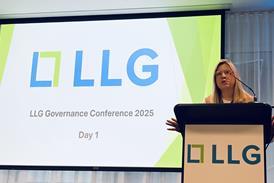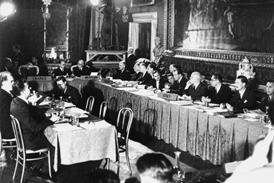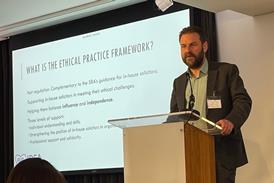Your case is successfully concluded, the final order is still warm in your file and now all that remains to be done is to deal with your costs.
Naturally, you expect to be properly remunerated for the work carried out in connection with your client's resounding victory.
However, you may find your problems have only just begun and the path to recovering these costs could be just as long and tortuous as the litigation itself.Did we win?One of the principal issues facing successful litigants on a detailed assessment is an analysis as to the extent to which they were successful.
Under the old costs regime before April 1999, co sts tended to be decided on a broad basis by the trial judge and, in ordinary circumstances, 'costs would follow the event' with the victor being entitled to costs.It is now clear that this approach is not to prevail under the Civil Procedure Rules 1998 (CPR).
Rather, the court will be encouraged to embark on a more detailed consideration as to the extent to which the receiving party was successful, their conduct and how far they conformed with the overriding objective.Probably, the leading judgment on the point comes from Lord Woolf himself.
In AEI Ltd v Phonographic Performance Ltd [1999] 1 WLR 1207 he said: 'The most significant change of emphasis of the new rules is to require courts to be more ready to make separate orders which reflect the outcome of different issues.
In doing this the new rules are reflecting a change of practice which has already started.
It is now clear that too robust an application of the "follow the event principle" encourages litigants to increase the cost of litigation, since it discourages litigants from being selective as to the points that they take.
If you recover all your costs as long as you win, you are encouraged to leave no stone unturned in your effort to do so.'A wealth of decisions has indicated the factors that will affect the award of costs have become a much more forensic exercise than of old.
In Gwembe Valley Development Co Ltd (in Receivership) v Koshy (2000) The Times, 30 March, the creditor succeeded in its claim but two days of a six-day trial were spent on unsuccessful issues.
The first defendant was ordered to pay 70% costs.
In Firle Investments Ltd v Datapoint International Ltd QBD, 8 May 2000 (unreported) the claimant just beat a CPR part 36 offer and only received one-third of its costs to the date of the offer and 15% thereafter.
Conduct both before and during proceedings has led to a one-half and one-third costs award (Groupo Torras SA v Sheikh Fahad Mohammed Al Sabah QBD, 5 July 1999 (unreported); failure to comply with the spirit of the protocol has led to a reduction in costs (Ford v GKR Construction [2000] 1 All ER 802 CA); and a successful appellant was ordered to pay costs because of his conduct in the lower court (Daniels v Walker [2000] 1 WLR 1382 CA).
The list goes on.Detailed assessmentIt is now apparent that simply winning a case will not be enough.
The court will be entitled to examine the scale of the victory, the issues on which one was successful, the way in which the litigation was conducted and all matters germane to the overriding objective in order to ascertain the proper costs to award.Just because the successful litigant has avoided a special costs order at trial does not mean that they are out of the woods.
It is quite proper for the paying party to take points on these matters, not before the trial judge who has heard the evidence, but rather before the judge or costs officer conducting the assessment.
This was made clear by the Court of Appeal recently in Shirley and others v Caswell [2000] Lloyds Rep PN 955 CA.
There the court explained the risk that a special costs order could lead to double jeopardy which is avoided by leaving the points to the assessment stage.
Lord Justice Chadwick stated: 'The costs of issues abandoned, or not pursued at trial, ought, prima facie, to be disallowed against the party incurring them on an assessment of the costs of that party by the costs judge -- because, again prima facie, they are costs which have been unnecessarily incurred in the litigation.
To take them into account in making a special costs order carries the risk that the claimants will be doubly penalised, they will be deprived of costs under the order, and again deprived of the same costs on an assessment or taxation.'It is unrealistic to expect that the costs of aspects of the case unsuccessfully litigated will be dealt with any differently.
So successful litigants must be ready to defend their success beyond the trial into the assessment hearing.CompromiseStatistically, most cases settle prior to trial.
This presents additional challenges at the assessment hearing.
Where the evidence admits, it seems that it will still be open to the paying party to argue that the final settlement shows that the receiving party was largely unsuccessful in certain areas.
In the light of the above authorities, the paying party will still seek to argue that the costs of a successful party should be reduced to take such failure into account.
Plainly it would be wrong to use the assessment of costs as a vehicle to litigate that which was compromised by the good sense of the parties.
To do so would be wholly contrary to the overriding objective and would be disproportionate.
But this does not mean that the court is deprived of material upon which such an assessment can be made.
The risk assessment in conditional fee cases, the part 36 offers, counsel's assessment, costs estimates and the advice given to the receiving party may all guide the court on assessment to its conclusion as to where the receiving party was successful.
Part 44.4 makes it clear that, on a standard assessment, the burden of proof remains on the receiving party to show that costs were not unreasonably incurred and are not unreasonable in amount.
Faced with the sort of attack envisaged, the receiving party must now be in a position to explain to the court where they were successful and the reasons for accepting a lower figure.
Against this background, I suggest that solicitors need to give considerable thought to the part 36 offers that they make to compromise the substantive litigation.
They are important not simply in terms of the figure put forward but also in terms of the rationale and logic behind the offer.
Without a carefully crafted part 36 offer the receiving party is abandoning an important evidential weapon in defending their bill of costs at a later assessment.ProportionalityIn the recent case of Solutia UK Ltd v Griffiths [2001] 1 Costs LR 99, (2001) LTL 26 April CA Sir Christopher Staughton said: 'Under the old regime, what the taxing master did was to consider each item individually and to inquire whether it was an item of work reasonably done and the sum reasonable in amount.
That process does not include the task of sitting back at the end to see whether the total is reasonable .
.
.
Under the new regime it is to be hoped that things will happen differently.'Proportionality has always been a target which courts should aim at .
.
.
Now it is increasingly known as an overriding objective of the Civil Procedure Rules.'While I am conscious that judges approach issues of proportionality in slightly different ways, most seem to follow the approach outlined in the above extract.



























No comments yet